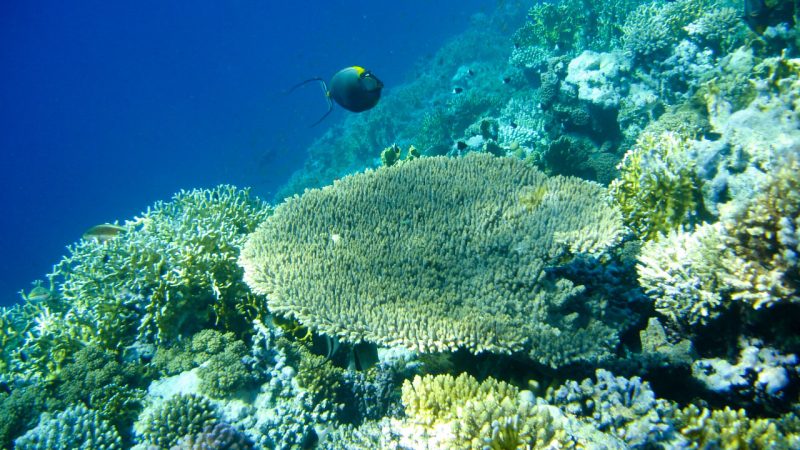Nature Communications’ publishes an article signed by Lewis La. Jones, from the Mapas_Lab of the CIM-UVigo, together with researchers from University College London and University of Bristol.
Changes in past climate and the distribution of shallow water habitat shaped the current distribution of coral reefs. This is the main conclusion of an international study carried out by the UVigo Marine Research Centre’s Mapas_Lab researcher Lewis La. Jones together with four other scientists from University College London and the University of Bristol. The conclusions of this research have just been published in the journal Nature Communications and, according to the authors, “could have a major impact on our field of study”.
Jones joined the University of Vigo a year ago from Imperial College London, to form part of the Mapas_Lab, led by the Starting Grant grantee Sara Valera. The lab, which is part of the Animal Ecology Group of the UVigo Marine Research Centre, focuses on studying the evolution and extinction processes over the last 540 million years, i.e. where biodiversity appears and disappears over time, generating palaeoclimatic maps for that period and also programming models that simulate the mechanisms of life diversification. The research published this Tuesday in Nature Communications was developed precisely during this first stage of the British researcher at UVigo. The article, entitled “Climatic and tectonic drivers shaped the tropical distribution of coral reefs”, is signed not only by Jones, but also by Philip D. Mannion, from University College London, and by Alexander Farnsworth, Fran Bragg and Daniel J. Lunt, from the University of Bristol.
Tropical rainforests of the sea
The distribution of reefs was not always the same, since in the geological past, explains Jones, “coral reef ecosystems were also located beyond the tropics and, in fact, fossil remains have been found at latitudes > 40º”. The aim of this international team, of which the Mapas_Lab researcher is a member, is to determine what caused such marked differences in the distribution of reefs in the past. The study adopted “an innovative interdisciplinary approach to test whether climate drove the spatial distribution of coral reefs in the geological past”.
The researchers found “no strong relationship between global temperature and the latitudinal distribution of coral reefs” and, faced with this challenge, decided to use habitat suitability models and paleoclimate reconstructions to predict the distribution of suitable habitats for coral reefs over the past 247 million years based on their present-day tolerances. “We then validated our predictions using fossil occurrence data from warm-water coral reefs” and showed that “a broader latitudinal distribution of climatically suitable habitat persisted between 247 and 37 million years ago due to warmer climatic conditions and a more uniform distribution of shallow marine substrate”. However, the area of climatically suitable habitat became increasingly biased towards the tropics from 37 million years ago as a result of global reef reefing and the increase in tropical shallow marine substrates as a result of tectonic evolution of the Indo-Australian archipelago.
Thus, the key conclusion of the study is that “changes in past climate that impacted sea surface temperature as well as the distribution of shallow water habitat shaped the current distribution of coral reefs”. However, while the results suggest that global warming may allow for long-term expansions of coral reefs, “coral reef ecosystems are unlikely to keep pace with the rapid rate of anthropogenic climate change”.

